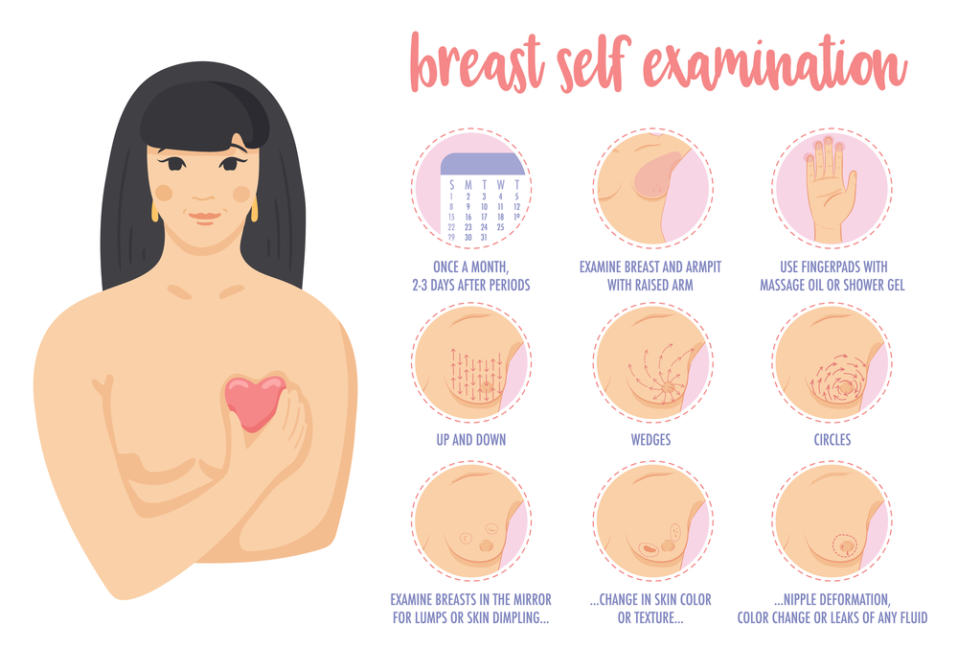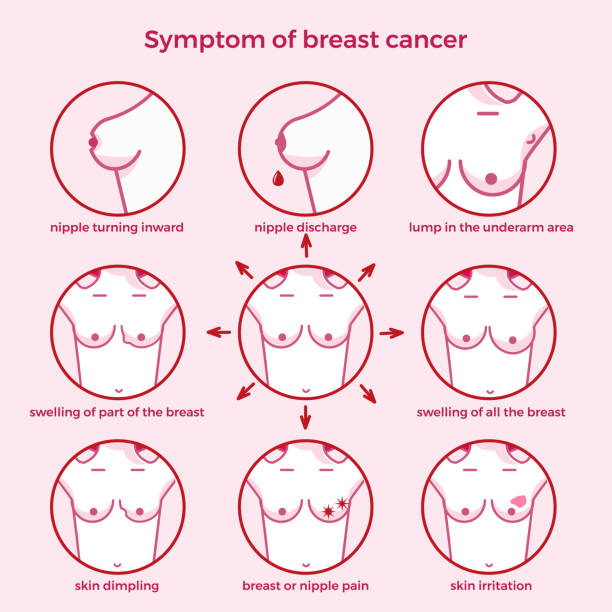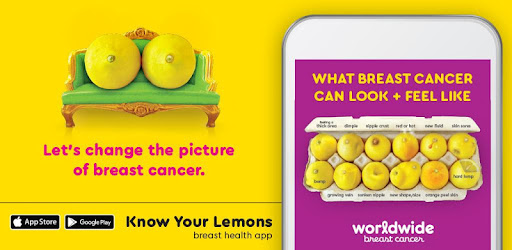Cancer

(Regular self-examination of your breasts is important for early detection of breast cancer!)
What is Breast Cancer?
Breast cancer is a disease where mutated cells grow out of control in the breast. The disease starts in one part of the breast: the lobules, ducts, or connective tissue. It can also metastasize or spread outside the breast through the blood and lymph vessels. There are different kinds of breast cancer, and each kind is categorized by which breast cells became cancerous.
Breast cancer is caused by one or multiple genetic mutations, or changes, in DNA. These changes are influenced by family genetics, and you can increase your risk for breast cancer by:
- Drinking alcohol
- Being overweight or obese
- Not being physically active
- Not having children or having children after 30
- Not breastfeeding
- Taking birth control
- Hormone therapy after menopause
- Getting breast implants
- Getting older
Most of these symptoms apply to women, but you should not assume that only women can get breast cancer. In the U.S., approximately 1 out of 100 breast cancers diagnoses are found in men. In fact, here are the risk factors:
- Being overweight or obese
- Getting older
- Family history
- Radiation and hormone therapy
- Klinefelter syndrome
- Testicle injury, swelling, or surgery
- Liver disease
Invasive Ductal Carcinoma – the cancer cells begin to form in the ducts of the breast, grow outside the ducts, and can metastasize in the breast tissue.
Invasive Lobular Carcinoma – the cancer cells begin in the lobules and spread to the nearby breast tissue.
Healthline - What To Know about Invasive Breast Cancer


While breast pain is a symptom of cancer, it can occur with other conditions that are not cancerous.
Still, if you notice any of these symptoms, please see a doctor as soon as possible. Most people with symptoms of breast cancer initially notice one or two of the following abnormalities:
- New lump in the breast or underarm (armpit)
- Thickening or swelling of part of the breast
- Irritation or dimpling of breast skin
- Redness or flaky skin in the nipple area or the breast
- Pulling in of the nipple or pain in the nipple area
- Nipple discharge other than breast milk, including blood
- Any change in the size or the shape of the breast
- Pain in any area of the breast

A screening is a medical evaluation of a disease using technology and medical tests. The types of screening for breast cancer include mammograms, Breast Magnetic Resonance Imaging (MRI), and clinical breast exams.
- A mammogram is an x-ray that allows a qualified specialist to examine the breast tissue for any
suspicious areas.
- The breast is exposed to a small dose of ionizing radiation that produces an image of the breast tissue.
- At age 40, women should schedule their first mammogram and go back every 1 to 2 years.
- If you are younger than 40 years old and have significant risk factors for breast cancer or you are experiencing moderate to severe symptoms, please ask a physician if they would advise breast cancer screening.
- Breast Magnetic Resonance Imaging takes pictures of the breast using magnets and radio waves and is used alongside mammograms to screen women at high risk for getting breast cancer.
- Clinical breast exams involve a doctor or nurse using their hands to feel abnormalities in the breast.
- Further examination includes ultrasounds and biopsies.
- Keep a healthy weight.
- Hilltopper Nutrition is a great resource on campus for students interested in learning more about healthy eating.
- Exercise regularly.
- Avoid or limit alcoholic beverages.
- Women should have no more than 1 drink per day, and men should have no more than 2 drinks per day.
- Know the risks of taking contraceptives and/or hormone replacement therapy by talking with your doctor. Find out if it is right for you!
- If you are having children, consider breastfeeding.
- Talk to your doctor about other ways to lower your risk, especially if the disease can be inherited.
Self-Examination
Early detection of breast cancer starts with you! You can follow the picture guides on this web page and perform a breast self exam to check yourself for symptoms. Or, download the Know Your Lemons app to keep track of them!

![]()
For more information on breast cancer, visit:
American Cancer Society - Breast Cancer
Center for Disease Control and Prevention (CDC) - Basic Information
Some of the links on this page may require additional software to view.

